Sometime in 2017 my brother-in-law, who teaches courses on makeup, asked me about a new book that had just been released on Don Post Studios. I was unaware of it, however when I looked into it I was stunned by the incredible assortment of masks that were featured within its pages. I contacted the books author, Lee Lambert, and asked him some questions regarding this project which he spent several years working on.
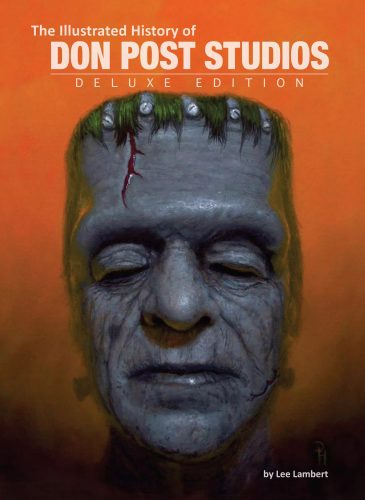
Jonathan Stryker: The book that you have written on Don Post Studios is gorgeous, meticulously researched and highly professional. Is this your first book?
Lee Lambert: Not only was it my first book, but I initially had no desire to write it. The thought of a book on Don Post Studios first crossed my mind about ten years ago. I had looked for a book on them and was surprised to find out that nobody had written one. In 2012, when the news broke that they were being shut down, I recognized the time was right for a book and waited to hear that someone was writing it. I kept close tabs on the rumor mill, waiting to hear that someone was going to take on the project. Weeks turned into months, and nobody was even talking about it. The more I thought about it, the stronger I felt that this was a book that needed to be done sooner rather than later. I had gone to my friend and fellow collector Dan Roebuck’s house and spent some time leafing through his binders of Don Post publicity photos and noticed that many of the old ones were starting to degrade. Finally, I realized if I didn’t step up and do it, it wouldn’t get done. I’m the first to admit that I didn’t have the knowledge to do it, but I was friends with the people who did. I’m also not a professional writer by any means, but this isn’t an academic textbook. I just approached it as a fan and collector talking to other fans and collectors. In hindsight, I think just putting together the book I wanted to see as a fan is why the book has done as well as it has.
JS: How long have you been a fan of horror?
LL: There was never any single Wow! moment for me where I fell in love with the genre. It’s just what I’ve always gravitated towards. As a kid growing up in the 1970’s in Toronto, Saturday mornings weren’t cartoons for me. We had a children’s show here in Canada called The Hilarious House of Frightenstein which featured interpretations of classic monsters as the main characters.
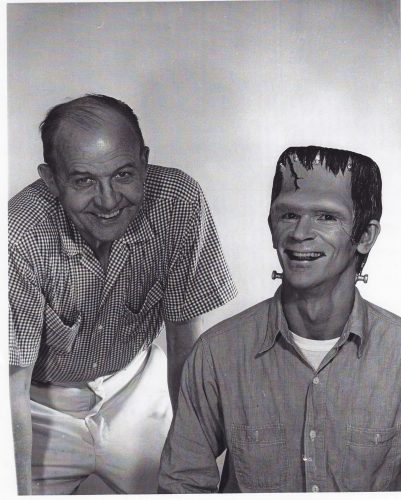
JS: My God, I also saw Frightenstein and remembered the opening credits very vividly. My parents had a black and white TV at the time. This was 1975/1976. I was in my second year of elementary school and looked forward to this show every day. I couldn’t recall the title of the show, but 25 years later my friend Debra told me what it was!
LL: Amazing! After Frightenstein, there was a station that showed either Universal classic horror or 1950’s sci-fi flicks. At the same time, my favorite toy was Hugo, Man of 1000 Faces and my favorite childhood book was Alan Ormsby’s Movie Monsters.
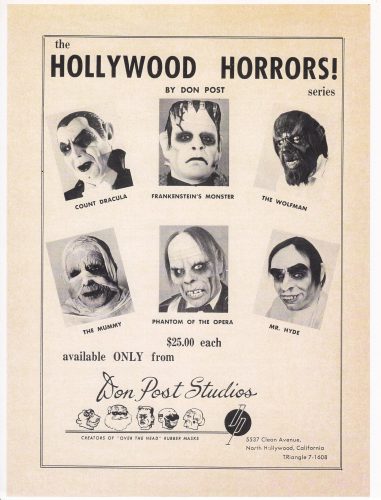
JS: Was the holiday of Halloween a special event for you during your childhood?
LL: Surprisingly, it wasn’t that big of a deal when I was a child. I enjoyed trick or treating, but I seldom put any thought into my costume and didn’t get excited for it. Back in the 1970’s, practically nobody did anything in my neighborhood in terms of Halloween decorating. There was one exception though. There was this one couple who used to prop up a few patio stones in the yard as tombstones and the wife would dress as a witch and run around the roof cackling at us kids.
JS: Oh, man! What horror films impressed you/scared you the most?
LL: I’ve never actually been scared during a movie. The closest was when I snuck in to see Halloween in 1978. I loved every minute of it while I was watching it but lying in bed at night I’d remember the scene where Jamie Lee Curtis looked out her bedroom window and saw The Shape looking up at her. Like most children, I had a good imagination and easily convinced myself that, if I looked out the window, The Shape would be standing in my yard. I didn’t have nightmares, but it took a bit longer to get to sleep. Looking back, there have been a lot of movies that I loved when I first saw them in the 1980’s and continue to love them to this day. That being said there were a few that had a real impact on me. The summer of 1981 was huge due to a pair of werewolf movies that I could not get enough of. The Howling was released in April, just before my birthday and I saw it well over a dozen times. In August, when it got to the point that I could recite The Howling dialog verbatim, An American Werewolf in London was released. At the time, the transformation scene in Werewolf completely captivated me and I would watch the movie over and over, trying to figure out how it was done.
JS: Wow, I had just started getting into horror films in the summer of 1981 but I saw them on television. I actually saw The Howling and An American Werewolf in London two years later on home video and I nearly memorized The Howling, too! I went to visit a friend at his house two years ago and we watched it and he practically recited it verbatim, too!
LL: Wow! Fortunately, back then, theater security at the local mall was almost non-existent. As a kid, you would buy a ticket for something G-rated and once you were past the ticket taker at the front, nobody cared what theater you went to or if you stayed for every screening.
JS: I know! It was so easy to do that back then! In 1983, I paid to see War Games and snuck into Risky Business.
LL: Ha! To this day, Joe Dante and John Landis remain my favorite directors with Dante’s Matinee being my all-time favorite film of any genre. Another film that really embodied (to me at least) what the video store experience was about was The Evil Dead. It wasn’t the slick, polished film that I was used to and I absolutely loved that. With creature design and special effects being what interested me the most about horror films, after seeing Evil Dead I thought Tom Sullivan was a genius and over 30 years later, I still do every time I watch it. A side note is that Tom Sullivan was a guest at the show where the Don Post Studios book was initially launched. The book was surprisingly a huge success and all the advance copies we had were sold out within 20 minutes. Shortly afterwards, Tom walked by and asked how it was going. When I told him how quickly the book sold out he shook my hand and congratulated me. To this day, that handshake means more to me than how well the book did.
JS: Your book is a 600-page treasure trove of information and an astonishing array of photos from the glory days of the Don Post mask era. How did you first discover Don Post’s work?
LL: Well, I really wish I had a cool story to answer this, but the boring truth is I saw the ads in the back of old Famous Monsters magazines but never knew (or cared at the time) who made them. I was fascinated by rubber masks as a child, even though I wasn’t allowed to have one. I would get old issues of Famous Monsters from a second-hand bookstore that was close to where we lived and, like many monster kids before me, I was drawn to the mask ads. I also loved looking at the low-end economy rubber masks that would pop up in the local Woolworth’s each Halloween. I would ask for one and always be told no. My parents would get me a Ben Cooper or Collegeville boxed costume. I now know that these were all Don Post Studios masks, but at the time I had no idea. The first time I ever became aware of the name was when Star Wars came out and the masks were sold in the big blue boxes with the DPS name on them. It wasn’t until I was a teenager that I began putting names to the manufacturers and not until adulthood that it really mattered.
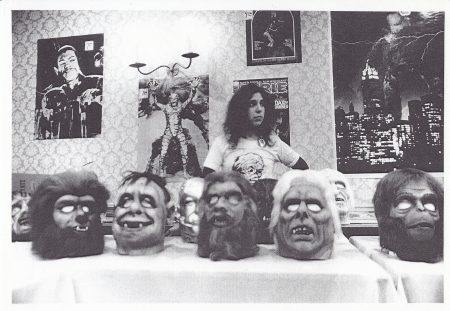

JS: My introduction to his work was in 1977 when Lazaar’s, the only store that I went to that had full head-sized masks, displayed the Don Post Star Wars line that consisted of Darth Vader, the Stormtrooper, C-3PO, and Chewbacca. They were a far cry from the cheap, plastic masks we had for Halloween that had a rubber band that broke after just several uses. Each mask cost $50 which might as well have been $500 to me, a nine-year-old with a 25 cents per week allowance.
LL: I remember those displays well! I had my Halloween costume planned around one of the Darth Vader helmets. I knew my parents would never buy one for me, but I hoped if I had the rest of the costume planned they would see I needed it. I had a black track suit, black rubber boots, and a red broomstick. We got to the big Woolco store that had the Star Wars masks and I went searching for the Vader helmet to show my parents how great (and necessary) it was. I approached the mountain of blue boxes, checking all the labels to find the Vader helmets. Sure enough, there were maybe 2 or 3 Chewbacca’s and every other box was a C-3PO. My disappointment was obvious and, while I can picture my young self on my hands and knees like a miniature Charlton Heston at the end of Planet of the Apes, screaming “Damn you, Woolco!”, the reality is I just looked sad. My parents took pity on me and bought me one of the 99 cent vacuformed plastic Vader masks with the elastic string, telling me it was “just as good”. “Just as good”?? If I had known profanities at the time I would probably still be grounded.

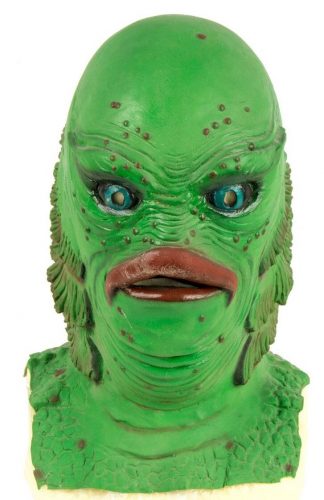
JS: Haha!
LL: This was about two weeks before Halloween and the Vader mask only lasted a few days before, you guessed it, the elastic broke. I ended up wearing a boxed Devil costume that year which would have been quite realistic if Satan wore a plastic smock with his picture on it. Come on, it was the 1970’s…anything was possible.
JS: What was the first Don Post mask that you acquired?
LL: As bad as it sounds, I actually didn’t get my first Post until I was an adult. As a teenager in the ’80s, there was no internet and I never really wanted to get into mail order so I had to settle for what was available locally. That meant all I had to choose from what were very low quality Rubies or the occasional Cinema Secrets or Illusive Concepts masks. I recently came across the plastic tote with my old masks and sat there looking at them, wondering whatever possessed me to buy Fred Flintstone and Homer Simpson masks. I don’t remember taking drugs, but no other explanation makes sense. I guess it’ll remain a mystery. Fast forward to 1998, when Post released the Calendar Reissue masks. There, looking back at me, were the familiar faces that used to taunt me from the pages of Famous Monsters. Instead of the “Which one of these will I get?” first thought that child Lee would have had, adult Lee’s first thought was the more mature “I need all of these!”. Once I had the bug, I jumped back into mask collecting with both feet. I bought a few of the Calendar Reissues, as well as some Posts I had remembered seeing advertised in the 1980’s. I purchased a bunch within a short period of time, so I really can’t say which was the first. I do remember a few of the first ones were a 1980’s reissue of the Boris Karloff Frankenstein, as well as a vinyl 1977 Tor Johnson.
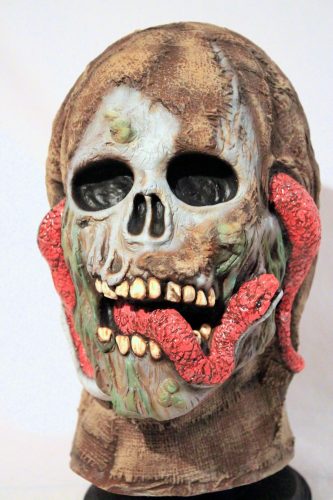
JS: Tell us about the relationship you have with the people who worked for Don Post and their contributions to the book.
LL: Everyone I asked for help was fantastic. Don Post, Jr. didn’t engage too much through the process, but that was understandable. The company he had spent over forty years running had been sold out from under him only a few months earlier and the wounds were still fresh. The last thing he needed was me poking around but he was still gracious and never refused to answer things for me or give me feedback. It was a similar situation with Rob and Cathy Tharp. They both joined DPS in the mid 1970’s, were let go as employees in the financial crisis of the mid 1980’s, but shortly afterward came back on a contract basis. They were both still dealing with the after-effects of DPS shutting down, but they were invaluable to me. They supplied me with a lot of never-before-seen behind-the-scenes photos, were able to clarify a lot of the detail questions that collectors obsess over (and nobody else gives a damn about). It wasn’t easy for them at times, and I knew it, but they believed in why I was doing the book and they agreed this material needed to be preserved. To this day, they’re like family to me. Bill Malone, who went on to direct films like The House on Haunted Hill remake and Parasomnia, was one of the DPS management teams in the 1970’s and he was extremely gracious with his time. He answered everything I had to ask him, even about the Captain Kirk mask that he’s sick of talking about. We spent the most time talking about Star Wars and the stories he told were just incredible. Then there was Bob Short, another 1970’s DPS mask maker who went on to win an Oscar for his work on Beetlejuice. Despite being such a talented and accomplished man, he’s very humble and down to earth. He was fantastic to speak with and gave me lots of information. Just last weekend someone asked me a question that I had forgotten the answer to, but I knew he would know. I reached out to ask and within an hour he got back to me with everything I needed. There were also numerous other artists I spoke with who had spent time at DPS and they were great at answering everything for me and letting me use some of their photos.
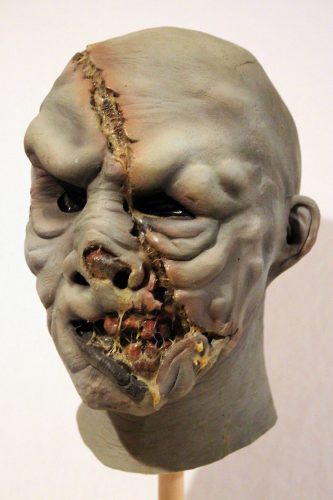
There were other contributors with no formal connection to DPS whose help was instrumental. I have to start with Danny Roebuck who was the first one to believe I could write this book. As I’ve told him, he was the who one believed in me when nobody else (including myself) did. He supplied me with about 90% of the vintage photos you see in the book. At the time, I didn’t know anyone I needed to know and Danny was the one who made the introductions. Even after all that, the most important thing he did was got the approval from Don Jr. for me to do the book. Next are two longtime Post collectors, Dante Renta and Evil Wilhelm. I spent several years focusing on learning all I could about Post masks and my knowledge base is only a fraction of what these guys know. Their knowledge is so extensive that when Don Jr. decided to do the Calendar Reissue project he consulted with Evil and Dante was brought in to document the process. He shot hundreds, if not thousands, of photos of each mask at every step of the process. There was a plan at the time to use them for another project, but it never came to fruition, so all of these wonderful photos were in Dante’s possession and had never been seen by the public. It was like striking gold when he offered me the use of any I wanted. I had been thinking the Calendar Reissues would be good for several paragraphs in the 1990’s chapter, but thanks to Dante and Evil, they make up one of the best chapters in the book. One thing I’ve told them both is that if they hadn’t been in support of my doing this book, I wouldn’t have done it. That’s not just how important their contributions were, but also how much I respect them.
One other person I have to recognize is my cover artist, Daniel Horne. When the point came that it finally hit me that I was doing this book, after several drinks and a half-hour of pacing back and forth frantically asking what I had gotten myself into, I started to think of a cover. I’ve been a huge fan of Dan’s work, from the first time I saw it. He was the first to come to mind, but at the same time I knew I’d have to pay for the cover out of my fairly shallow pocket which effectively crossed him off the list. I decided I wanted a 1960’s Glenn Strange Frankenstein on the cover, just because it is an iconic image and one of the masks people most often think of when they hear the name Don Post Studios. Through contacts in the hobby, I was able to track down an old blank pulled from the original mold that is much larger and more detailed than the smaller copies from recast molds that you see around today. I sent it to my friend Pete Infelise for paint work. After matching the color of the custom finish in the 1966 calendar, Pete spent several weeks with a detail brush, touching up the wrinkles to perfectly match the calendar photo. The mask was then sent to Dante for his excellent custom hair work. My plan was to photograph the mask for the cover but, as time went on, I knew I’d regret it if I didn’t at least ask Dan about painting the cover. I had known Dan for several years and we had become friends, but I had never asked him for anything. I ran into him at a show and we talked about the book I was working on. I finally bit the bullet and nervously asked him if it would be possible to commission him to paint the cover. I was ecstatic when he said he would love to, and then I almost fainted when he quoted me a price that was almost a gift. I sent him hi res photos of the mask from all angles and he took the artistic liberty of the orange background. I had actually been thinking of a black background, but I trusted his artistic vision more than my own so I let him choose. In hindsight, that was the right decision as the orange is perfect.
When I step back and look at all the help I received from so many people, all of whom I’ve come to consider as friends, I think I probably contributed the least to the book. It seems like I just organized everything and wrote down other people’s stories. Maybe that’s enough.
JS: Putting this book together couldn’t have been easy. What were some of the challenges you faced and what would you do differently if you were to do it again?
LL: There were two big challenges. The first was simply condensing almost seventy-five years of history into a single book, while still keeping the visual scrapbook style I had envisioned. I wanted large photos that stood out and grabbed the reader’s attention. Unfortunately, the more of those I included, the less room I had for text. My approach was to tell the story through images with the text providing context for the photos. In hindsight, I probably should have made a few compromises on images to get more text in but that was the call I made at the time.
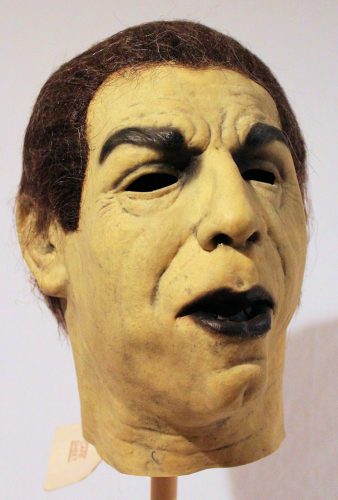
The other big challenge was overcoming that voice in my head that kept telling me I had to make everyone happy. As I worked on the book, I found myself talking to other collectors who I knew were my target audience. I would ask them what they thought the book should look like to get some feedback to hopefully make the book better. Of course, ask twenty people and you get twenty different answers. Do you think any one of them described wanting a book that looked anything like what I was actually putting together? Nope…not even close. That got really discouraging and I realized why everyone who had tried to write this book before me packed it in and quit. Something I’ve never shared publicly before is that I struggle with severe anxiety. It was really bad at the time and I had convinced myself that nobody would like this book, everyone would hate me, and I would have rocks thrown at me if I showed my face in public. I was very seriously thinking of giving up when Cathy Tharp told me to just relax and write the book I would want to read. It sounds simple because it is, but it really was what I needed to hear. That stopped the wheels spinning in my head and from that point I never asked anyone else what they wanted to see or discussed the content of the book with anyone who wasn’t helping with it.
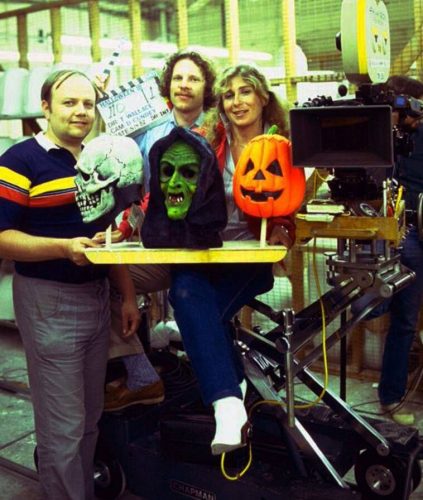
One other difficulty I ran into, which wasn’t a huge issue but it’s worth mentioning is there were some questions that were impossible to answer because the only people who knew the answers were gone. I drone on a lot so I may have mentioned this already, but one of the reasons I did the book was that the number of unanswerable questions would keep growing as time went on.
One thing I would definitely change is the size of the book. A 600-page hardcover is impressive, but it is an expensive book to produce and that cost gets passed on to the readers and I have no doubt the cost has hurt sales. I would have split it into 2 or even 3 volumes and capped it at 250-300 pages per volume. My next book is on Distortions Unlimited and that was what I did for that one. By splitting it into two volumes, I found I could actually get more material in and add more text. The end result is a better book overall.
That being said, I don’t have any regrets with the book I put out. It may not be perfect, but it was a learning experience. I was really humbled when the book was nominated for a Rondo Award for Best Book of 2014. There were 17 nominees in the category and I got runner-up. While I was a little disappointed at the time, I’m proud of how close I came and I enjoy a bit of self-deprecating humor by billing myself as “Rondo Award-Losing Author”. Like I said, I’m not a professional writer nor do I pretend to be. I’m just an average fan and collector talking to other fans and collectors.
JS: Are these Don Post masks behind this bass player?
LL: No, none of those are Posts. Most are from Jeff Keim at Death Studios and some are from Paul Daniels at Darkside Studios, two independent mask making companies that have been around for quite a while. I don’t know exactly how long Death Studios has been around, but my earliest recollections of them would be from the early 1980’s. Life took me out of the hobby from the late 1980’s until 1998. When I got back into it, Darkside had been around for several years.
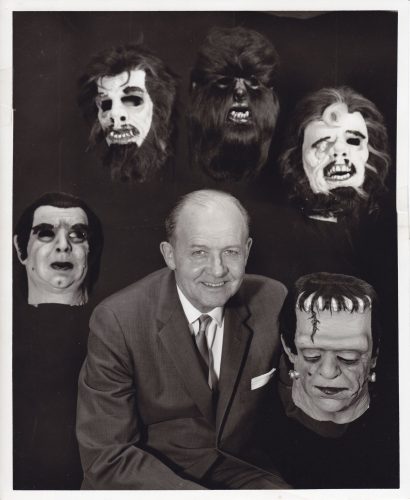
JS: The photos that you published in the book depicting the masks in full color are of excellent quality. Did they require any kind of digital restoration or were they left in their original state?
LL: Believe it or not, those aren’t vintage photos. About 90% of those are masks in my own collection that I photographed for the book. The others were masks I either didn’t have or I knew someone who had a better copy. I have a pretty good idea of what most of my friends have in their collections, so I would just get hold of them and ask them to shoot a few photos of specific masks I wanted. My collection room was ruined in a flood several months earlier so nothing was organized. It was boxes of masks everywhere that I had to rummage through to find what I needed. I bought a white bedsheet from Walmart and nailed it to the wall in one corner of the basement, draping it over an old aquarium stand. That was my far-from-professional photo studio. It was still a better setup than what I used for the glow mask photos, including the one on the back cover. I’ve never told anyone this before but those were shot in the only room I could get dark enough…the bathroom. I had my camera, a pile of glow masks, and a fluorescent blacklight fixture. I would put the mask stand on the shelf next to the toilet, use the blacklight to charge up the glow paint, then turn off the lights and snap the photos. If they looked good, I would turn on the lights and swap masks. I felt ridiculous doing it, but it worked!
JS: This is an incredible story of an equally incredibly book! Where can readers purchase it?
LL: It is available through Amazon, however people can save a few bucks by ordering direct from the publisher at this link.

JS: When can we expect your next book, the one on Distortions Unlimited?
LL: I get this question a lot and it’s extremely frustrating because I don’t have a specific answer. The Distortions Unlimited book was finished in July of 2017. Unfortunately, the publisher ran into financial difficulties between the time they purchased the publishing rights and the time the book was completed. As a result, there was no money to print the book and it was left in limbo. There was a second publisher who came into the picture. After reviewing the book in electronic format, he wanted the publishing rights and it looked like he might get the book printed. For reasons I can’t get into, that deal fell through and it looked like the book was dead. As a last ditch effort to get the book out, the publisher agreed to give me back the publishing rights so I can organize a Kickstarter campaign in the very near future to try and raise the funds needed to get the book released. Since I only get one shot at this, and there have been so many false starts when things looked good only to later fall apart, I’m not taking any chances and making sure everything for the Kickstarter is in place before I even give a launch date for the campaign. As there are more details to be released on that, they will be released on the book’s official Facebook page which can be found here.
The situation is extremely frustrating to me personally for a few reasons, the most practical of which is that I’ve already put a lot of my own money into the book. What’s more important though, is that I put three years of my life into it and came up with a finished product that is actually better than the Post book (and that’s coming from a Post collector). I really want people to have the opportunity to see it for themselves. Distortions’ history is split into two distinct areas of interest, starting with mask-making and then changing direction to the haunted attraction industry in 1995. With that division occurring almost halfway through its 40-year history, I split the Distortions history project into two volumes which keeps the cost down for Distortions fans and gives them the opportunity to purchase only one volume if their interest is in only one aspect of Distortions’ history. With all of the uncertainty surrounding the release of the first volume, I’ve put the second volume on hold until either a publisher comes forward wanting to back the second volume or the first volume makes enough money to fund the printing of the second. It’s about 90% complete so it will be easy to wrap up if/when I get that commitment.
JS: I can say that I have my fingers crossed and am looking forward to both of these! Thank you so much for your time.
LL: Thank you!
 Horror News | HNN Official Site | Horror Movies,Trailers, Reviews
Horror News | HNN Official Site | Horror Movies,Trailers, Reviews